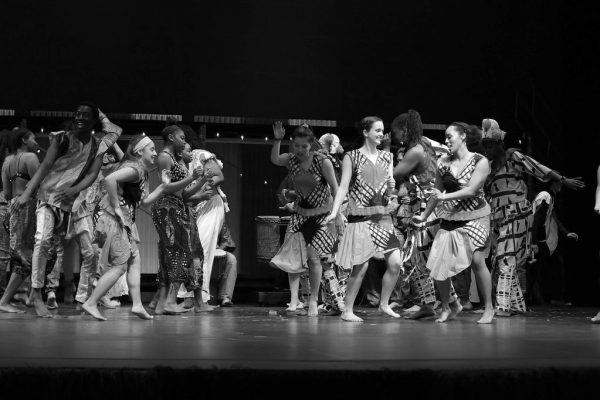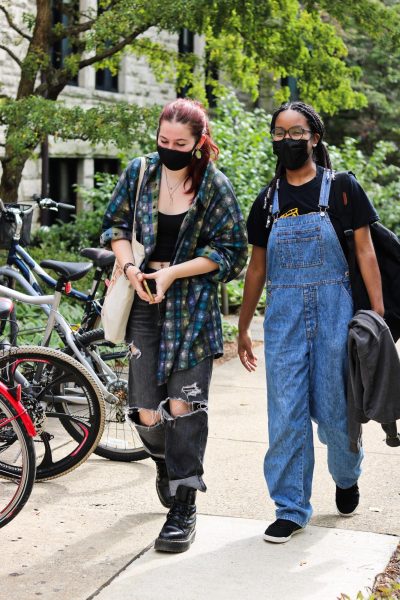Oberlin Community Should Build Familiarity with One Oberlin Report
The spring of 2018 marked the second semester of my freshman year of high school. At the time, I was 14 years old, and I was starting to hear discussion among my peers regarding their exhaustive, and often dauntingly complex, plans for college. They set goals, applied for summer programs, volunteered for hours on the weekends, and began to enter into the harsh realities of competition within standardized testing and the financial burdens of a college tuition.
At the same time, Oberlin College began its own project of what it considered to be self-improvement: a yearlong strategic review of its financial future and survival strategy in the face of massive budget deficits. This is known as the Academic and Administrative Program Review, which culminated in a final report known as the One Oberlin report.
The lengthy One Oberlin report details what elements of the College’s expenses and modes of operation were, in 2018, considered pertinent threats to Oberlin’s economic well-being, as well as multiple proposed strategies to increase the College’s appeal and competence within the marketplace of higher learning. The report focuses largely on the unsustainability of Oberlin’s financial model prior to 2018. It cites concerning figures regarding fiscal reliance on Oberlin’s endowment, revealing that, “Annual extraordinary draws on the endowment have occurred for more than two decades, in some years pushing the annual draw as high as 8 percent of the endowment’s value.”
To a member of the Oberlin community, many of the strategies outlined in the report should be patently familiar. The scope of One Oberlin includes jurisdiction over expenses such as faculty pay, housing and dining, and what AAPR refers to in a section heading as “Improved Usage of Space and Facilities.”
Over the past two years, the massive uptick in enrollment to the College of Arts and Sciences appears to correlate with the report’s observation that “Arts & Sciences students bring in, on average, $10,000 more in tuition revenue per year than Conservatory students.”
As a student, reading this report was somewhat jarring. As I moved from one page to the next, I couldn’t help but feel that I was looking at my experience at Oberlin through a viewfinder while focusing the lens. The vague suspicions I had in my first year that the Oberlin I was attending was somewhat altered from the Oberlin I had expected — regardless of what disarray was caused by the COVID-19 pandemic — were validated.
For me, and for many members of my now second-largest-in-record class, it was difficult to understand why the community we had joined felt so little like what we had expected as applicants. I frequently heard comments such as, “I feel like I’ve gone back to high school again,” or “I really don’t know anyone in my classes.” I know that when I considered what aspects of Oberlin I considered central in my decision to apply, I made specific note of what I saw as an opportunity to be a part of a close-knit community— one bolstered by a low student-to-faculty ratio and small class sizes.
One of the main cultural attributes of any liberal arts college is exclusivity without elitism. Part of that exclusivity comes from the fact that not everyone wants to go to a school like Oberlin. In the absence of other traditional markers of higher education, such as Greek life, athletic prominence, party culture, or proximity to home for the student body — the majority of whom are not from Ohio — Oberlin relies on the existing culture of its campus and of its student body to maintain its reputation.
Therefore, it is worrying to me that the broad outline of the One Oberlin report commands a fundamental shift away from this. The report does note “a few key areas the committee considered carefully but will not recommend changing at this time” which “go to the heart of Oberlin’s mission and values,” including the preservation of student financial aid, “the liberal arts college, the Conservatory of Music, the art museum, … a comprehensive residential experience,” “the breadth and depth of Oberlin’s current educational offerings,” and “maintaining the capacity of [Oberlin] faculty to be scholar-teachers.” However, none of these take into account the importance of the student body itself, regardless of what opportunities they are afforded by “a more robust set of Winter Term options” or “the presence of a Business concentration.”
The One Oberlin report seeks to remedy a problem that I can offer no possible solution to — the financial concerns Oberlin is currently facing. I can’t pretend to believe that maintaining the image of a small liberal arts college and ensuring an institution’s survival can always be compatible. Oberlin is, for better or for worse, an entity beholden to financial constraints. My concern is that the damage done by meeting our financial obligations as outlined in the One Oberlin report is not being fully considered by those in charge.
To give a concrete piece of advice: I would recommend that anyone unfamiliar with the One Oberlin report build that familiarity. I can’t in good conscience recommend that you pore over all 42 pages, but I do urge you to, at the very least, skim it for relevant information. While its language is understandably coated in a corporate veneer, it is an interesting document and, by the look of these past two years, is well on its way to taking full effect.




